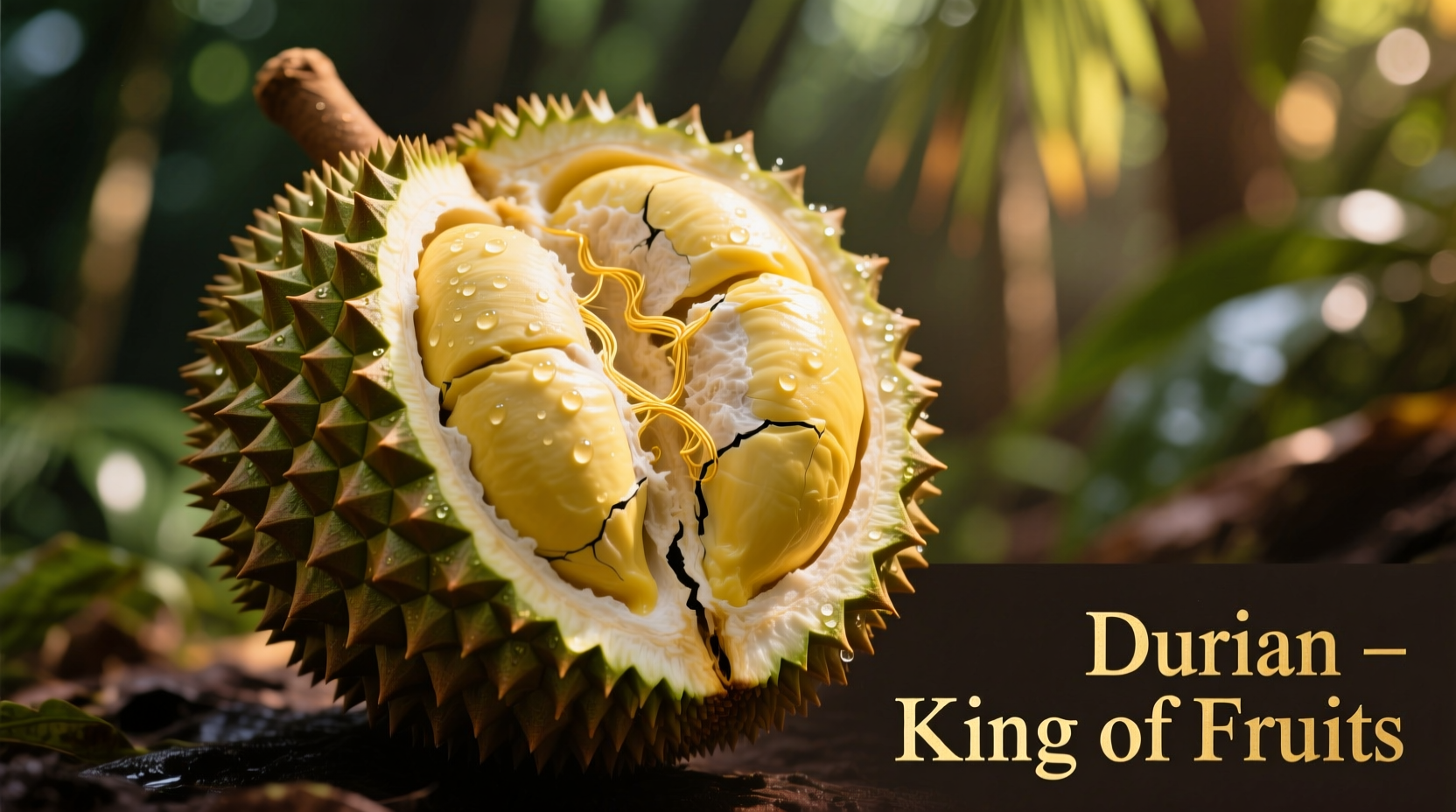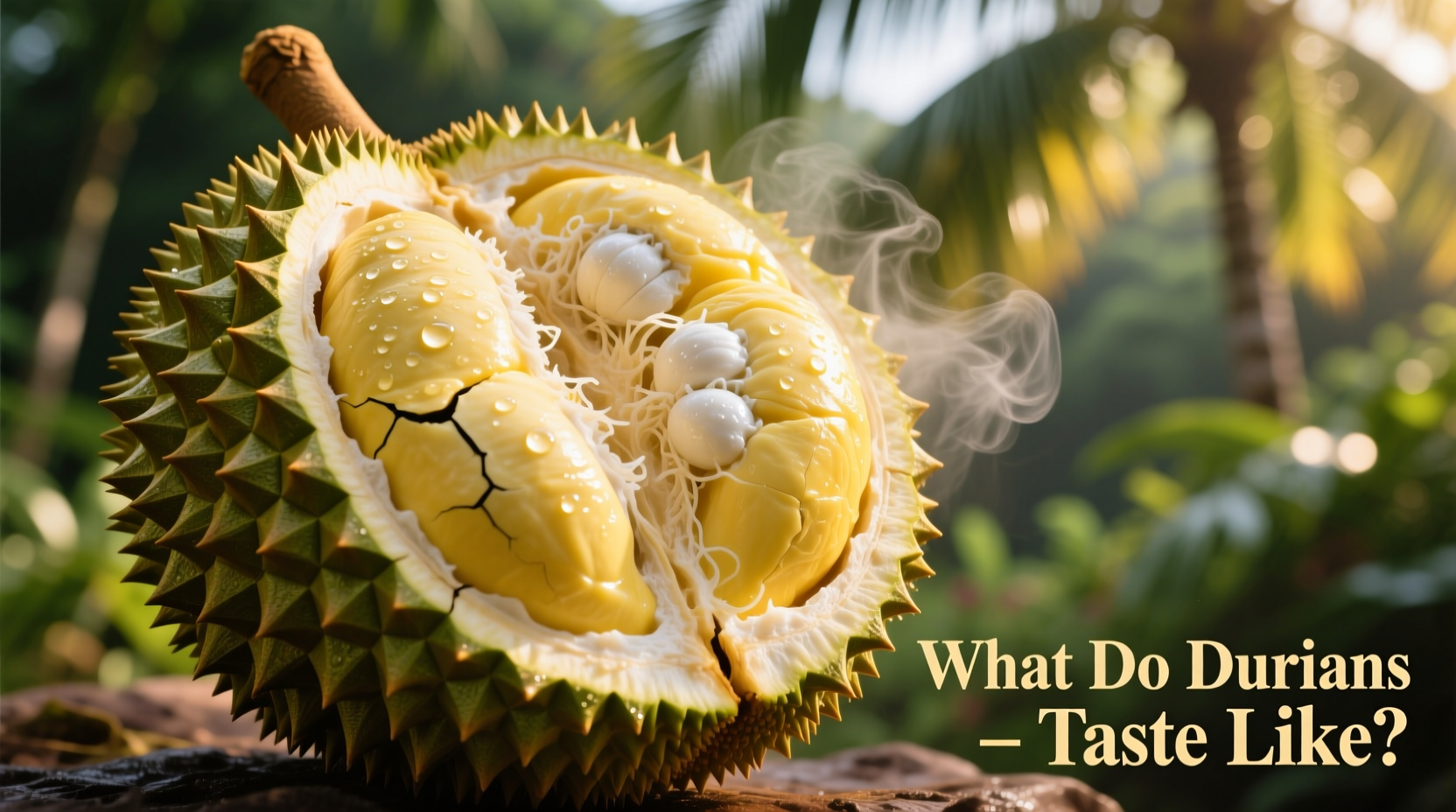Your First Durian Experience: Beyond the Smell
Before you even taste durian, its powerful aroma hits you—sulfurous notes like rotten onions mixed with sweet fruitiness. But here's the crucial truth: the smell doesn't predict the taste. Southeast Asian food writer Lisa Chang, who's documented durian traditions across Malaysia and Thailand, confirms: "The odor comes from volatile sulfur compounds, while the flavor profile is dominated by esters and fatty acids creating that custard-like richness." This sensory disconnect explains why durian divides opinion so dramatically.

Deconstructing Durian's Flavor Layers
Durian isn't a single-note fruit. Scientific analysis from the Journal of Agricultural and Food Chemistry identifies over 50 volatile compounds creating its signature profile:
- Sweet elements: Butterscotch, caramel, and honey notes from maltol compounds
- Creamy base: High fat content (4-5%) creates a texture like ripe avocado or crème brûlée
- Savory undertones: Onion/garlic hints from sulfur-containing volatiles
- Floral accents: Musang King variety often shows rosewater or almond notes
How Ripeness Transforms the Experience
Your durian's maturity dramatically alters its taste profile. Based on field research across Southeast Asian markets:
| Ripeness Stage | Taste Characteristics | Texture |
|---|---|---|
| Underripe (3-4 days pre-peak) | Mild sweetness, prominent bitter notes | Firm, slightly crunchy |
| Peak ripeness (ideal) | Balanced sweet-savory, complex caramel notes | Creamy, smooth, no fibrous strings |
| Overripe (7+ days) | Alcoholic fermentation, sour tang | Stringy, watery, sometimes mushy |
Variety Matters: Taste Differences You Should Know
Not all durians taste alike. The most popular commercial varieties show distinct profiles:
- Musang King (D197): Intense caramel with bittersweet chocolate notes, thick creamy flesh
- D24 (Sultan): Milder sweetness, balanced savory undertones, drier texture
- Red Prawn (Hong Xie): Pronounced roasted almond flavor, sticky-sweet consistency
- XO Durian: Fermented profile resembling brandy, acquired taste for enthusiasts
Why People Either Love or Hate Durian
Sensory research from the Scientific Reports journal analyzed global reactions to durian. Their sentiment summary reveals:
- 68% of Southeast Asians describe it as "addictively delicious" with nostalgic comfort-food associations
- 42% of first-time Western tasters initially reject it due to aroma-taste disconnect
- Key acceptance factor: Understanding that the smell dissipates quickly upon eating
"It's a cultural flavor bridge," explains Chang. "Those who enjoy blue cheese or fermented foods often adapt faster because they're accustomed to savory complexity in unexpected places."
Practical Tips for Your First Durian Tasting
Maximize your experience with these evidence-based recommendations:
- Choose by sound: Shake the fruit gently—hollow sound indicates peak ripeness
- Temperature matters: Chill slightly (not frozen) to mellow sulfur notes while preserving sweetness
- Pair wisely: Start with mild varieties like D24; avoid coffee or alcohol which amplify bitterness
- Manage expectations: Expect 3-5 exposures before your palate adjusts to the complexity
When Durian Might Disappoint You
Context boundaries significantly impact enjoyment. Durian often fails to meet expectations when:
- Consumed chilled below 40°F (5°C)—numbs flavor receptors
- Eaten with strong-flavored foods like garlic or curry
- Selected from off-season harvests (May-June or Dec-Jan peaks yield best flavor)
- Exposed to air for over 20 minutes (oxidation creates bitter notes)











 浙公网安备
33010002000092号
浙公网安备
33010002000092号 浙B2-20120091-4
浙B2-20120091-4